By Sophia Landis
From millennia-old burial mounds of Native Americans to videogame protagonists like Captain Falcon, one thing is for sure: humans hold falcons in high regard. So what makes falcons so special? And how do you know if the bird you’re looking at is a falcon? This brief article will give you a few pointers on the falcon genus and help you specifically identify a few of the more widely spread species in North America. All photos in this article are copyrighted and used with permission from the photographer, Jerry Liguori.
What Makes a Falcon?
North America is home to six members of the genus Falco. All six species have narrow, pointed wings which help them to reach high speeds, especially in vertical stoops. Their speed and agility frequently allows them to catch prey mid-air. Though North American species differ in size and plumage, all have dark brown to black eyes and a tomial tooth (a notch on the upper bill). Falcons also have what’s called a malar stripe (a dark vertical stripe on each side of the face), although individual variation in plumage can make this marking less distinct. Arguably, the most interesting fact about falcons is that many of you likely see them on a regular basis without even realizing it.

An American Kestrel shows off its dark eyes, malar stripes, and tomial tooth on the upper bill
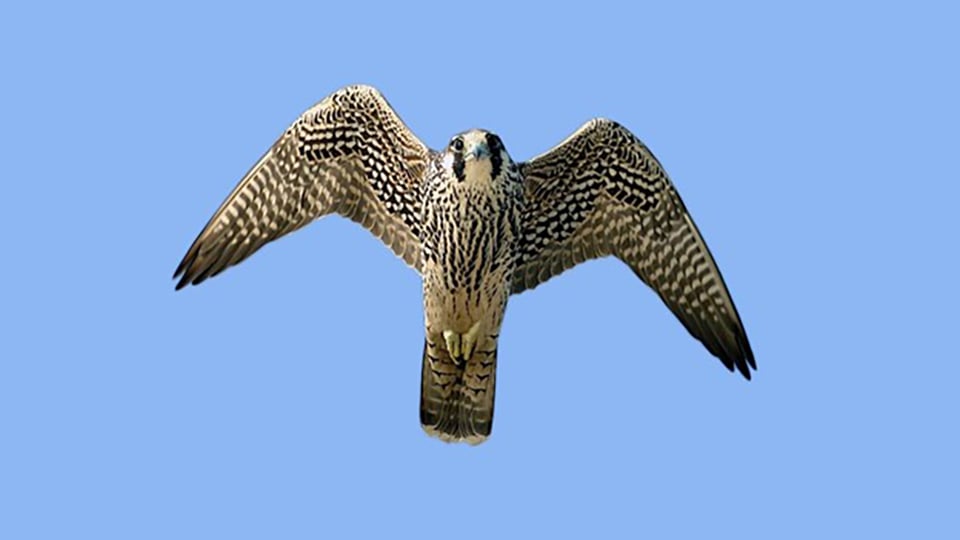
A Peregrine Falcon displays its pointed wings
The All-American Bird
The most abundant and widest spread falcon in North America is the American Kestrel. This species covers the bulk of the lower 48 states year-round and has adapted to living in human-altered landscapes. Have you seen one before without knowing? More than likely. Kestrels are hardly bigger than a songbird, with a length of just 8-11 inches and a wingspan of 20-24 inches. They are frequently perched on telephone wires and fenceposts, easily overlooked due to their small stature. In order to spot them, keep your eyes peeled for their striking plumage: males have a rufous back with dark streaking and sport blue wings with dark primary feathers. Females lack the blue wings and have a more rufous appearance overall. However, both sexes have a blue crown, two dark stripes on each side of their face, and a rufous tail with a thick black band near the tip.
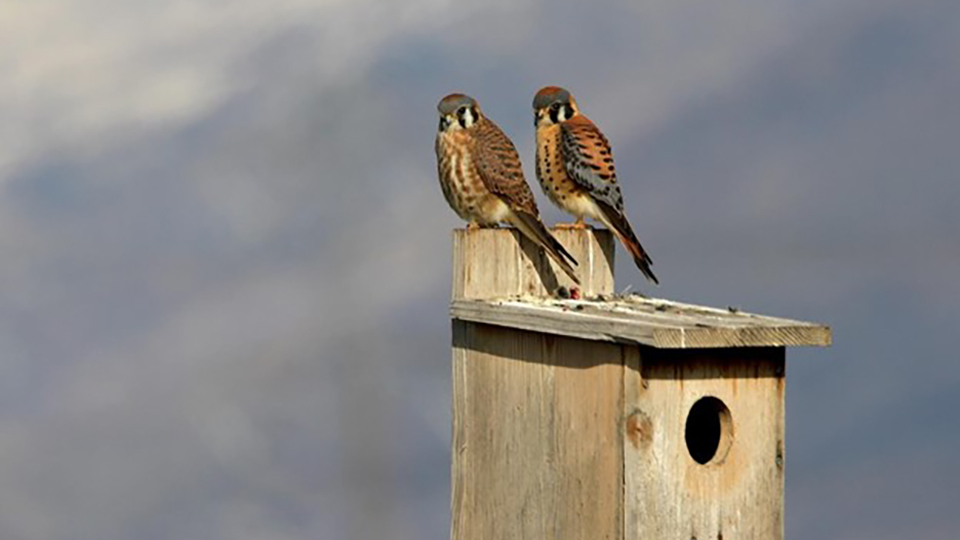
From right, a female and male American Kestrel perch together
The Magic Falcon
Okay, okay… This falcon is not actually a wizard that can perform magic tricks, but it certainly feels like a magic moment any time one encounters a Merlin. Merlins are just slightly larger than American Kestrels, with length averaging 9-12 inches and wingspan averaging 21-27 inches. They spend their breeding season in the western two-thirds of the country in addition to the eastern coastline, then head north towards Canada for winter. To identify a Merlin, look for streaking on the entire underside with uniformly dark plumage on top. The tail is banded. Though there are three subspecies on a spectrum of dark to pale, the intermediate-colored subspecies, Taiga Merlin, is most common.
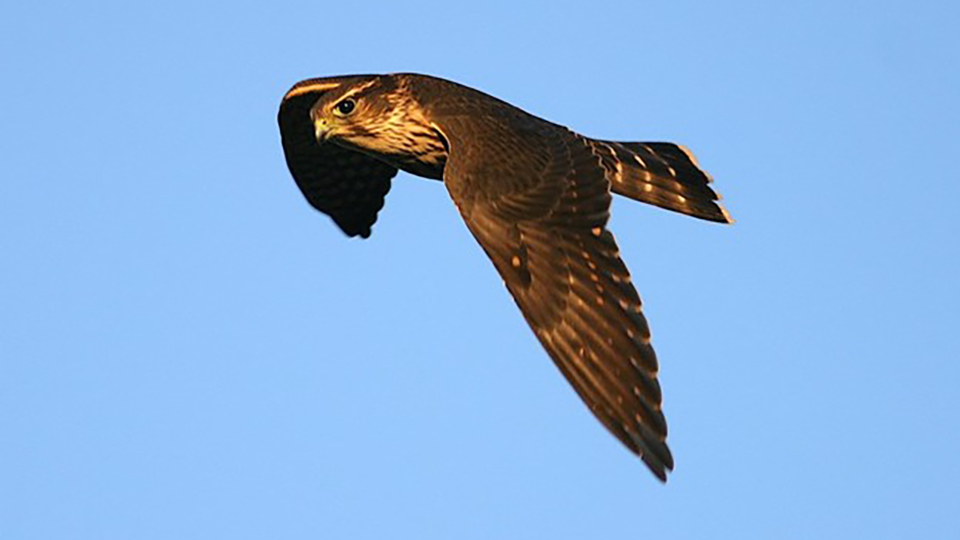
The upper plumage of a Taiga Merlin

A Merlin’s streaked underside and banded tail
Prairie Predator
The West was deemed “wild” for a lot of reasons, but what is wilder than the Prairie Falcon? This species is widespread across the western half of the country, especially during winter months. They range in length from 15-19 inches with wingspans of 35-45 inches. Prairie Falcons are stealth hunters, however, they see no problem stealing prey from Northern Harriers or other raptors. (That’s the “Wild West” for you.) Their above plumage is sandy brown overall. Their underside is pale with brown spotting and is accented with dark wing pits and outer wing linings. Prairie Falcons have brown tails that are lightly banded throughout.
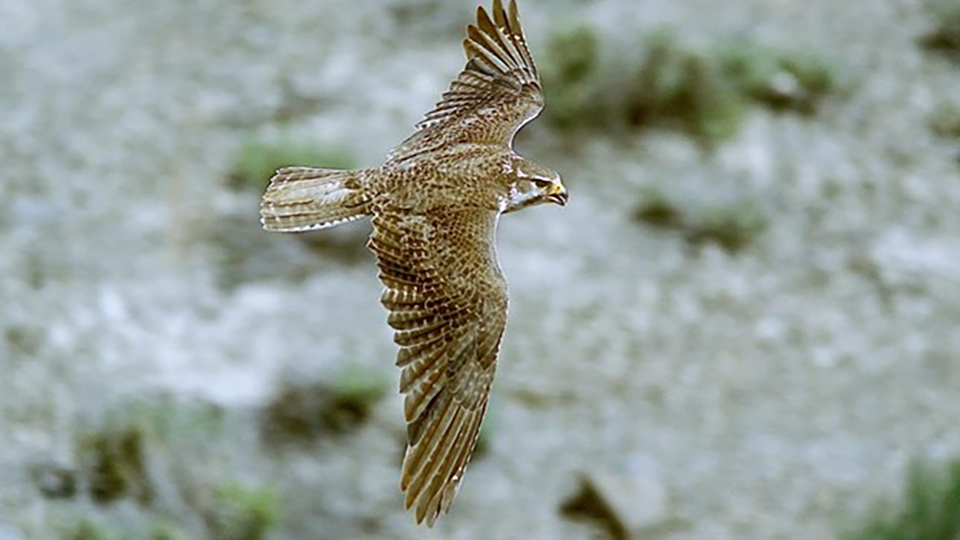
The sandy brown plumage of a Prairie Falcon
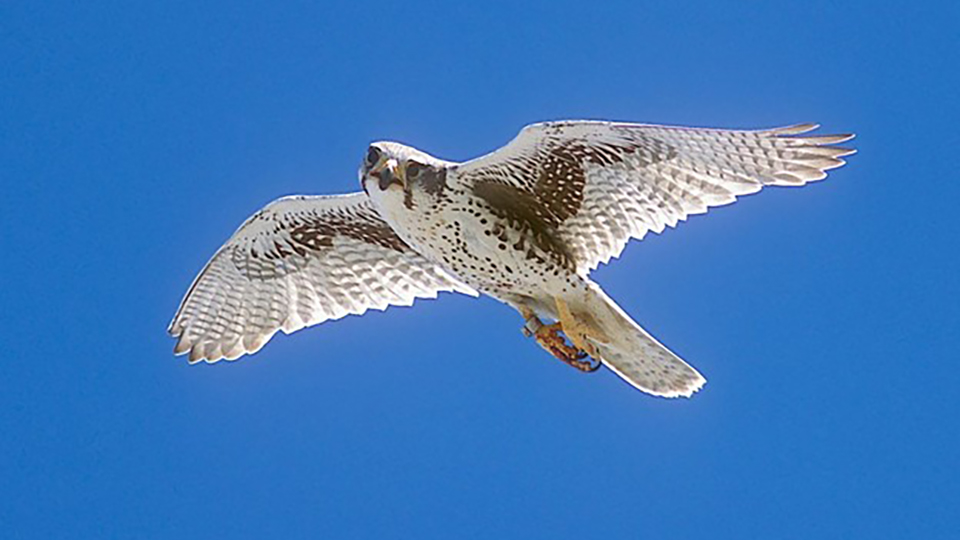
A Prairie Falcon shows off its dark wing pits
Faster than a Speeding Bullet
Well, they might not be quite that fast, but Peregrine Falcons are the fastest animal known to humankind. They are able to dive at speeds of over 200 miles per hour when catching prey! (Thank goodness they don’t eat humans.) The species was recently extirpated from certain areas of its natural habitat, but Peregrines are making a huge comeback, now found throughout the country. We can thank Raptor Resource Project for their huge (and successful) undertaking of repopulating the bluffs of the Upper Mississippi River with Peregrine Falcons. The organization’s continued monitoring of these bluffs ensures that the population of Peregrines in the area remains steady. To spot a Peregrine, look for a blue to black-ish backside and a dark head. Their underside is paler with dark streaking on the belly and checkered patterns on the underwings. Their tails have dark banding.
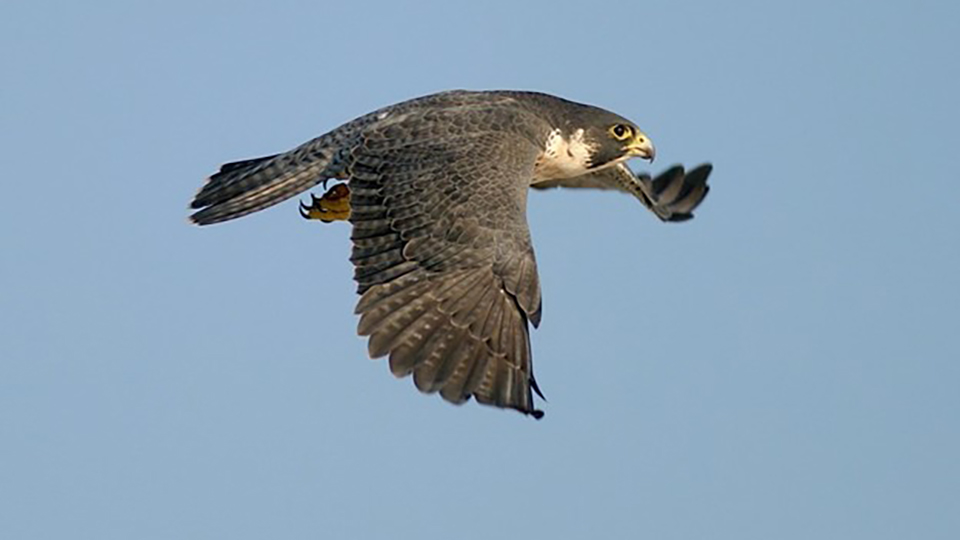
The blue-ish plumage of a Peregrine Falcon
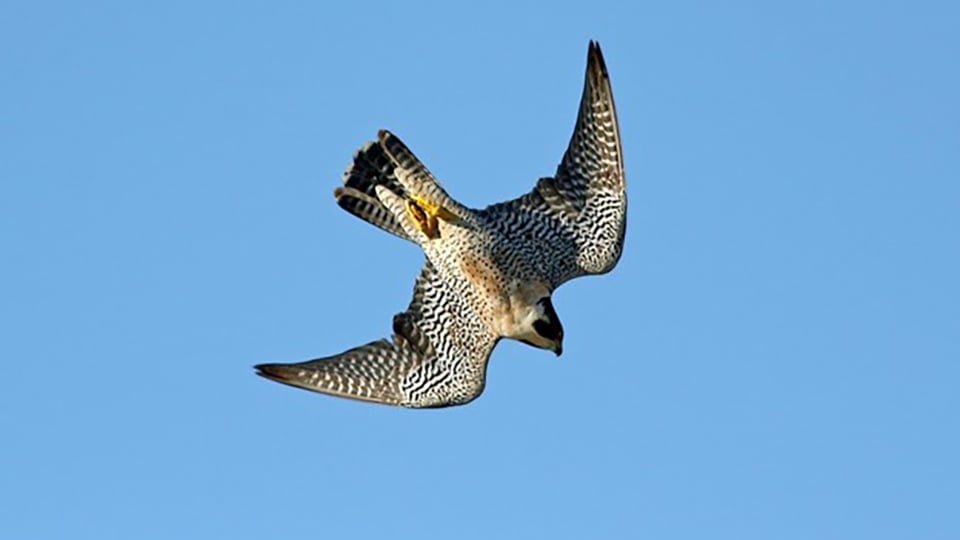
A Peregrine Falcon’s streaked underside
They’re Falcon Awesome
From tiny, stealth predators to city slickin’ dive bombers, it’s clear why humans are so enamored with falcons. Hopefully this article has offered some insight on how to spot one yourself! After all, humans have marveled over falcons for millennia. It only makes sense to keep the fascination going.
For further information on raptor identification, check out The Crossley ID Guide: Raptors by Richard Crossley, Jerry Liguori, and Brian Sullivan; Hawks from Every Angle by Jerry Liguori; and/or Hawks in Flight by Pete Dunne, David Sibley, and Clay Sutton. If you have a smartphone, consider downloading the free app, “Raptor ID.”
 The Raptor Resource Project
The Raptor Resource Project The Raptor Resource Project
The Raptor Resource Project